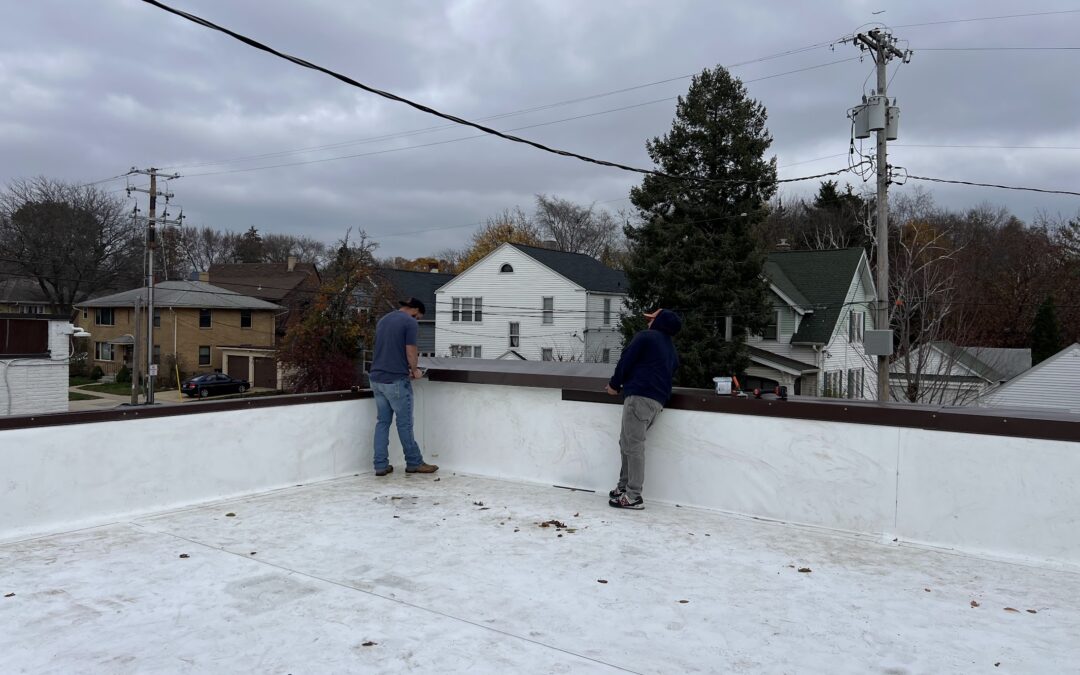likRoof coatings play a crucial role in protecting buildings from the elements, improving energy efficiency, and extending the lifespan of roofing systems. Among the many options available, two of the most popular choices are silicone and acrylic coatings. If you’re considering a roof coating but are unsure which one to choose, this guide will break down the key differences, advantages, and disadvantages of silicone vs. acrylic roof coatings.
Understanding Roof Coatings
Roof coatings serve as a protective layer applied to existing roofs to enhance durability, reflect sunlight, and prevent leaks. They are widely used in commercial, industrial, and residential buildings to reduce maintenance costs and improve energy efficiency. When comparing silicone vs. acrylic roof coatings, it’s essential to consider factors such as performance, longevity, cost, and environmental conditions.
What is a Silicone Roof Coating?
Silicone roof coatings are made from silicone polymers, providing a highly flexible and durable membrane that adheres well to various roofing materials. Silicone coatings are widely used in areas with extreme weather conditions because of their excellent resistance to UV rays, moisture, and temperature fluctuations.
Advantages of Silicone Roof Coatings
Water Resistance: One of the biggest advantages of silicone roof coatings is their exceptional ability to resist ponding water. Unlike acrylic coatings, which tend to break down and deteriorate when exposed to standing water for long periods, silicone remains intact and fully functional. This makes it an excellent choice for flat or low-slope roofs where water accumulation is a frequent concern.
UV Resistance: Silicone roof coatings provide outstanding protection against ultraviolet (UV) radiation from the sun. Continuous exposure to the sun’s rays can cause other coatings to degrade over time, leading to premature cracking and failure. Silicone coatings, however, retain their integrity and reflective properties, ensuring long-lasting performance and reducing the overall risk of damage.
Flexibility and Durability: One of the standout features of silicone coatings is their impressive flexibility, which allows them to expand and contract with temperature changes. This elasticity prevents the coating from cracking, splitting, or peeling due to thermal expansion and contraction, making it ideal for regions with extreme seasonal temperature variations.
Low Maintenance: Once applied, silicone coatings require very little maintenance compared to other types of roof coatings. Their ability to resist dirt accumulation, mold, mildew, and weathering means that property owners can enjoy long-term protection without the need for frequent touch-ups or costly repairs.
Energy Efficiency: Because of their reflective properties, silicone coatings can significantly reduce heat absorption on a roof’s surface. This leads to lower indoor temperatures, reduced strain on air conditioning systems, and decreased cooling costs. Over time, these energy savings can help offset the higher upfront cost of silicone coatings.
Disadvantages of Silicone Roof Coatings
Higher Initial Cost: While silicone coatings provide long-term value, their initial cost tends to be higher than that of acrylic coatings. This may be a deterrent for budget-conscious property owners who are looking for a more affordable option upfront.
Dirt Accumulation: Silicone coatings have a tendency to attract dirt and debris over time, which can affect their reflective properties. While the coating itself remains intact, the buildup of dirt may require occasional cleaning to maintain maximum energy efficiency and reflectivity.
Difficult Recoating Process: Unlike acrylic coatings, which can be easily recoated, silicone coatings require additional preparation before a new layer can be applied. The slick surface of silicone makes adhesion more challenging, meaning extra steps such as priming or additional surface treatment may be necessary.
What is an Acrylic Roof Coating?
Acrylic roof coatings are water-based coatings made from acrylic polymers. They are commonly used for commercial and residential applications due to their affordability, versatility, and ease of application.
Advantages of Acrylic Roof Coatings
Affordability: One of the main reasons property owners opt for acrylic coatings is their cost-effectiveness. Acrylic coatings are significantly more affordable than silicone coatings, making them an attractive choice for those working within a tight budget while still seeking a durable and protective roof coating solution.
Reflectivity: Acrylic coatings offer excellent solar reflectance, helping to minimize heat absorption on the roof’s surface. This reduction in heat transfer helps to maintain cooler indoor temperatures, thereby lowering energy costs and making the building more comfortable during hot weather.
Easy Application and Recoating: One of the biggest advantages of acrylic coatings is their ease of application. They can be applied with a brush, roller, or spray, making them accessible to professional roofers and even DIY enthusiasts. Additionally, acrylic coatings are easy to recoat, allowing for quick touch-ups and maintenance when necessary.
Environmentally Friendly: Because acrylic coatings are water-based, they contain low levels of volatile organic compounds (VOCs), making them more environmentally friendly than solvent-based coatings. This makes them a popular choice for property owners who prioritize sustainability and eco-conscious building materials.
Good Adhesion to Most Roofing Materials: Acrylic coatings adhere well to a variety of roofing substrates, including metal, asphalt, and concrete. This versatility allows them to be used in a wide range of roofing applications, making them a flexible and adaptable option for many property owners.
Disadvantages of Acrylic Roof Coatings
Poor Ponding Water Resistance: One of the biggest drawbacks of acrylic coatings is their inability to withstand ponding water for extended periods. If water remains on the roof for too long, the coating can break down, leading to leaks, deterioration, and reduced effectiveness over time.
Less Durability in Extreme Conditions: While acrylic coatings perform well in mild to moderate climates, they are not as durable in extreme weather conditions. Harsh UV exposure, freezing temperatures, and heavy rainfall can cause the coating to become brittle, crack, or degrade faster than silicone alternatives.
Frequent Maintenance: Due to their lower durability, acrylic coatings may require more frequent recoating and maintenance compared to silicone coatings. Over time, this can add up in terms of labor and material costs, making them less cost-effective in the long run.
Which is Better?
Ultimately, the choice between silicone vs. acrylic roof coatings depends on your specific needs, budget, and climate conditions. If your roof is prone to ponding water and you want a long-lasting, low-maintenance solution, silicone is the better choice. However, if you are looking for a more affordable, reflective, and eco-friendly option for a sloped roof, acrylic might be the right fit.
Before making a decision, consult with a professional roofing contractor like ours at Stradling Roofing to assess your roof’s condition and determine the best coating option for your property. Contact us today to schedule a free inspection!


Recent Comments